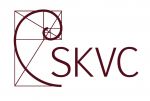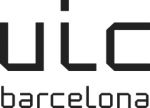Difference between revisions of "Main Page"
| Line 85: | Line 85: | ||
|} | |} | ||
|} | |} | ||
| + | |||
| + | <div class="mainpage_box"> | ||
| + | <h3><span class="header_icon" aria-hidden="true" role="presentation">[[File:OOjs UI icon edit-ltr.svg|20px|middle|link=]]</span><span><translate><!--T:2--> Edit and use MediaWiki</translate></span></h3> | ||
| + | <div id="mainpage-users" title="<translate nowrap><!--T:14--> Users</translate>" class="items"> | ||
| + | * {{ll|Help:Navigation|2=<translate><!--T:7--> Learn how to navigate</translate>}} | ||
| + | * '''{{ll|Help:Editing_pages|2=<translate><!--T:8--> Learn how to edit a page</translate>}}''' | ||
| + | * {{ll|Help:Contents|2=<translate><!--T:9--> Learn more about reading, editing, and personal customization</translate>}} | ||
| + | </div> | ||
| + | </div> | ||
Revision as of 12:10, 8 June 2021
SMART-QUAL: Structured indicators to manage HEI Quality System Project seeks to address some existing important needs, as the lack of a comprehensive framework of harmonised quality indicators, or the lack of official recognition of Internal Quality Management Systems (IQMS) implemented by HEIs due to weak common criteria. Therefore, this project has intention to support and wide the IQMS of HEIs in the European Higher Education Area (EHEA). The main objective of the Project is to support HEIs in the implementation of effective internal QM system by designing a set of quality indicators to be implemented and improve in the short and long term the internal QMS (make them more efficient and effective) and the alignment of these indicators in a structured catalogue according to the three main levels of decision making (strategic, tactical and operational).
Specific objectives of the project are:
- Design of a set of quality indicators to implement an efficient and effective internal QM system. The set of indicators will be the basis for the monitoring, assessment and improvement of the HEIs main processes (teaching and learning; research; and relations with the society).
- Alignment of the designed quality indicators in a structured catalogue, according to the three main levels of decision making (strategic, tactical and operational).
Smart Qual Project
Higher education quality management systems (QMS) are often criticised for being too-process oriented, box-ticking and insufficiently focused on consequential and generalizable outcomes. One of the reasons underlying these critics relies on the fact that QMS tend to rely on a large quantity of quality indicators, which makes their accuracy and timely analysis difficult, and consequently undermine their adequate use for decision-making at different levels (strategic, tactical, or operational). In this context, the main objective of the SMART-QUAL project is to support higher education institutions (HEIs) in the implementation of effective internal QMS, by designing a set of quality indicators to support them. The indicators will be aligned in a structured catalogue according to the three main levels of decision making (strategic, tactical, and operational). The quality indicators to be designed are meant to be applied by the institutions within their QMS and, as such, contribute to improve in the short and long term these systems (making them more efficient and effective). In order to arrive at the planned structured catalogue of quality indicators, the SMART-QUAL project intends, in a first phase, to develop a Quality Indicators Scoreboard and a Smart-Qual Wiki (IO1). Step 1 of this first phase was the establishment of the state of the art of the QMS of higher education institutions across Europe (IO1.A1 - State of the art of the quality management system of higher education institutions). To do so, information was gathered on the current situation of QMS in 36 HEIs spread over 5 European countries (Portugal, Spain, Belgium, Lithuania and Italy), with particular emphasis being given to the quality indicators used in these systems. A template was designed to frame the data collection, which was then used by all the SMART-QUAL partners in their empirical work. This work included desk research (analysis of different institutional documents, such as quality manuals, strategic plans and activities plans, as well as the institutions’ websites), combined with formal and informal contacts with the institutions included in the sample.
The project plan will consist of several phases:
- Quality planning and control
- Achievement of objectives
- Project monitoring
- Quality and Evaluation surveys
- Risk management
- Corrective actions
- Communication and reporting
Partners
- U.Aveiro.png
Expected results
- Create a harmonized list of quality indicators to beused in IQMS.
- Qualty Indicators Scoreboard (QIS), a structured and organized catalogue.
- Guidelines to support the QIS practical implementation in HEIs.
- Quality assurance agencies acknowledgement and recognition of the proposed quality indicators and the QIS.
- Raise awareness on the harmonized indicators among the members of HEIs governance and management boards all over Europe.
- Develipment of an extended network of HEIs and stakeholders willing to implement the quality indicators and the QIS.
Other info
Parte di prova
|
About the CESBA Wiki
|-
| style="color:#000; padding:2px 5px 5px;" |
|} | style="border:1px solid transparent;" | ! | style="border:1px solid transparent;" | | class="MainPageBG" style="width:45%; border:1px solid #a3bfb1; background:#d3d3d3; vertical-align:top;"|
Be a part of CESBA |
About CESBA |
|
CESBA's mission is to facilitate the diffusion and adoption of sustainable built environment principles among all the stakeholders of the built environment sector through the use of harmonized assessment systems in the whole life cycle of the built environment.
The CESBA cycle encompasses the tools, services, core assessment indicators and steps of the built environment life cycle that represent CESBA. The CESBA initiative policy paper establishes the policy position of CESBA regarding EU policy developments on sustainable buildings. Building assessments harmonized by CESBA Currently, there are more than 80 building assessment tools in Europe. Those assessment tools are not comparable and lead to export burdens for SMEs as well as profusion among the actors of the sustainable construction market. There is indeed a clear need for the harmonization of those building assessment tools. CESBA aims at this harmonization by the following measures:
The CESBA initiative is aimed at a variety of CESBA users.
|
|}
<translate> Edit and use MediaWiki</translate>
<div id="mainpage-users" title="<translate nowrap> Users</translate>" class="items">






